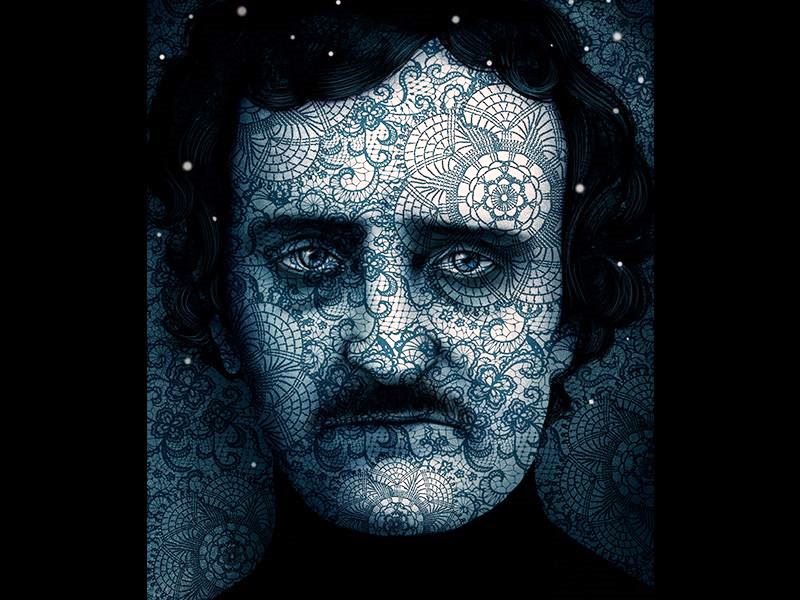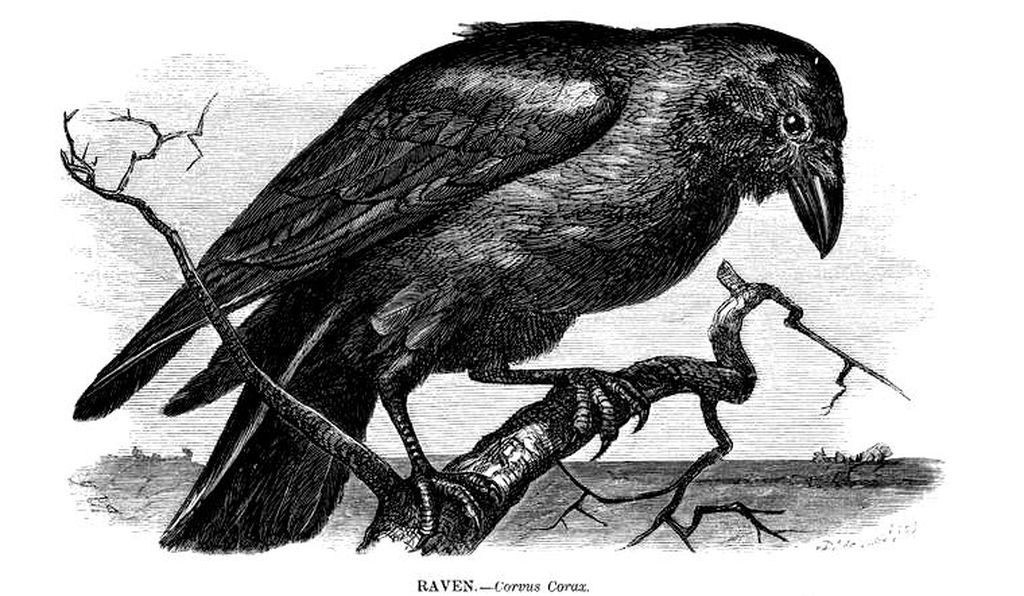Fans of the mystery writer have no shortage of ways to pay homage to the scribe behind “The Raven” and so much more

Elisabeth Becker went all the way from Wisconsin to Philadelphia last July to introduce her two young children to America’s sacred text—not the Declaration of Independence, but Edgar Allan Poe’s “The Raven.” She walked the kids into one of the most important shrines of the Poe cult, a dark and dreary hallway in the Central Library, and sat them in front of a glass case holding Grip, the raven believed to have inspired Poe’s great poem, published in 1845. Becker, sitting on the floor with her charges, read aloud from a pop-up book of “The Raven.” Then she posted the photos on Facebook, where more than a million fans of some 100 Poe-themed Facebook pages lurk.
It was just another suitably weird tribute to the most influential American author ever, a literary brand beyond the considerable dreams of Twain, Melville, Wharton, Whitman, Hemingway and Fitzgerald. Like The Great Gatsby and Moby-Dick, Poe’s The Fall of the House of Usher and The Cask of Amontillado are among the top 100 books assigned in American college English classes. But Poe is not confined to scholarly debate; each January 19 hundreds of Poe fans mark his birthday (1809) with pilgrimages to Poe sites in Philadelphia, Baltimore, New York and Richmond.
The stories and poems scribbled by the half-mad Romantic have shaped our national obsession with tales of chaos and darkness. Says Kirsten Mollegaard, an English professor at the University of Hawaii at Hilo who has examined Poe’s fame: “No other American writer has had as enduring and pervasive an influence on popular culture.”
Go to YouTube and you’ll find “The Raven,” about the ill-omened creature given to chanting “Nevermore,” read aloud by Christopher Walken, William Shatner, James Earl Jones and Lisa Simpson, Homer’s daughter. Poe’s tale has inspired actors such as Bela Lugosi, Boris Karloff, John Cusack and Huey, Dewey and Louie. The mathematician Mike Keith reworked the poem so the number of letters in each word corresponds to the first 740 digits of pi. And only Poe among the literary giants has an NFL football team named for one of his works, the Baltimore Ravens. (The team won the Super Bowl in January 2001 with a great defense; “Quoth the Ravens,” Chris Berman said on ESPN, “Never score!”)
Poe changed world literature with the first detective story, The Murders in the Rue Morgue, published in 1841. In other words, he “made possible about 80 percent of contemporary literature and television programming,” says J.W. Ocker, author of Poe-Land. With C. Auguste Dupin, a brilliant, eccentric outsider who outsmarts the bumbling constabulary with analytical reasoning, Poe created the forerunner of all fictional detectives to come. In 1901, Arthur Conan Doyle, who created Sherlock Holmes, called Poe the “father of the detective tale” and complained that Poe had “covered its limits so completely that I fail to see how his followers can find any fresh ground which they can confidently call their own.” Poe’s fictional “tales of ratiocination,” as Poe himself called them, also introduced a style of deduction that influenced real-world crime-solving.
Horror writers from Stephen King to H.P. Lovecraft to Justin Cronin, too, claim blood relations with Poe. Earlier European Gothic fiction emphasized the supernatural, castles and curses; Poe brought horror down to earth and made us fear the ordinary and everyday. The deranged narrator in The Tell-Tale Heart decides to murder his housemate because he has an evil eye—or maybe just because he wants to. It was the first story of sociopathic horror, says Stephen King, the predecessor of modern nightmares like Thomas Harris’ Hannibal Lecter. It may well be that Walt Whitman’s poetry and, as Ernest Hemingway would say, Mark Twain’s novel Huckleberry Finn created the American vernacular. But Poe gave us the stories we tell and retell.
Poe was tuned to the modern age and its rejection of religious taboos against exploring the realms of horror and death. There sits the imp of the perverse with the most entertaining ghastly tales ever told. But he is also the perfect fit for our postmodern age, when each person makes of the daemon of mystery and fright what he or she will. “Annabel Lee,” Poe’s ode to a woman loved so intensely the angels grew envious and killed her, is suggested as a reading at weddings, while on YouTube, “Goth Girl,” her eyelids the green of grave rot, reads the same tale aloud in a cemetery.
Poe has long had a reputation as a drunken mad genius, and bohemians, tormented artists, struggling writers and even drug addicts embrace him as their own. More recently, though, the 2017 PBS American Masters film, Edgar Allan Poe: Buried Alive, downplayed the tortured image. “He comes off instead as a smart guy who wanted to become famous, changed jobs all the time and was fascinated with technology,” the HuffPost wrote. “Maybe Edgar Allan Poe was the first millennial.”
Poe’s death in 1849 was something the author himself might have written. Missing for nearly a week, he was found incoherent on the streets of Baltimore in clothes that did not belong to him; he died four days later at the age of 40. But as Poe famously wrote in The Premature Burial, “the boundaries which divide Life from Death are at best shadowy and vague,” and his voice is still heard from beyond the grave. As Ocker puts it now, “Never RIP, Edgar Allan Poe.”
